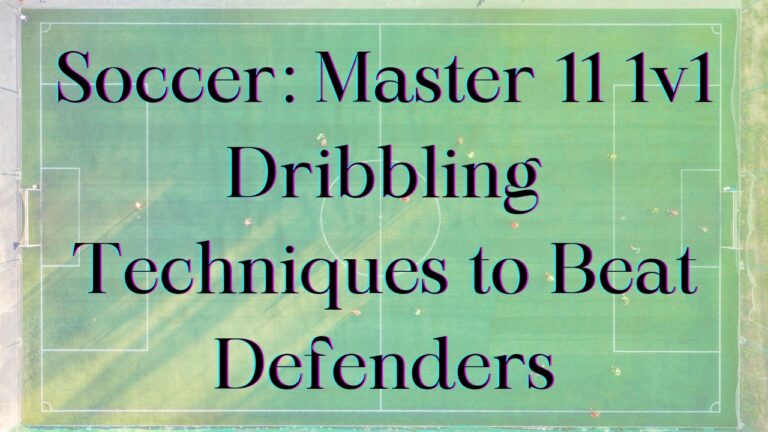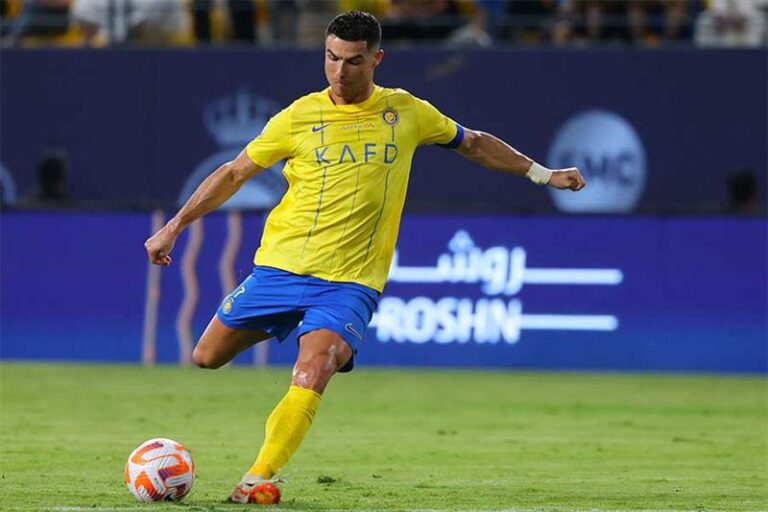1. Goal Scoring
The most fundamental role of any striker is to score goals. After all, matches are won and lost based on which team puts the ball in the back of the net more often. As the player stationed in the opposition’s half closest to goal, the striker bears the biggest responsibility for providing the cutting edge to their team’s attacks and turning chances into goals.
To succeed as a prolific goal scorer, a striker needs several attributes. Excellent finishing ability is a must – the composure to stay calm under pressure in the box and the precision to place shots past the goalkeeper from tight angles and awkward positions. Shooting power is also important for blasting shots from a distance and beating the keeper with velocity from close range. Clever movement and positioning in the penalty area allow the striker to lose their marker and find pockets of space to operate in. The best strikers have an innate sense of being in the right place at the right time to poach close-range goals.
Statistical analysis shows the massive value strikers who excel at scoring bring to their teams. For example, in the 2021-22 English Premier League season, the Golden Boot winner Heung-Min Son scored 23 goals to propel Tottenham to a top-four finish. In contrast, the lowest scorers Norwich City and Watford were relegated. This demonstrates how a reliable goal-scoring threat like Son can transform a team’s fortunes.
In summary, putting the ball in the net is a striker’s number one responsibility. Elite strikers boast composure under pressure, shooting accuracy, power, and clever positioning to fulfill this role. Their goal-scoring exploits make the difference between success and failure for their team.
2. Stretching the Defense
In addition to being ruthless finishers, elite strikers also excel at stretching opposing defenses. By playing on the shoulder of the last defender and making runs behind the defensive line, a striker forces the opposing team’s backline to drop deeper towards their own goal. This opens up space in midfield for the striker’s teammates to operate in.
The threat of a striker getting in behind the defense compels center-backs to constantly look over their shoulders. They cannot step up too high or get too tight to opposing midfielders for fear of leaving gaping holes for the striker to exploit with their pace. Defenders are pinned back closer to their own goal, creating more room for midfield runners to drive into advanced areas and play penetrating passes.
Strikers like Kylian Mbappe at Paris Saint-Germain exemplify how a striker’s searing pace and intelligent runs in behind can shred defenses. Even if the passes played in behind don’t connect, the threat of his movement forces defenders into a more cautious and deeper starting position. This allows PSG’s creative midfielders more time and space to dictate play further upfield.
Merely by occupying the last line of defense, a striker can manipulate the opposition’s shape. Their runs drag defenders out of position, opening up midfield for their teammates. Pace, intelligent movement, and quality runs in behind are essential skills for strikers looking to fulfill this stretching role.
3. Hold Up Play
The best strikers not only score goals themselves but create chances for others too. Excellent hold-up play is an important skill for bringing teammates into the game and starting attacks from advanced areas.
When the defense clears long balls forward, the striker often has to receive awkward, aerial passes with their back to goal and defenders pressuring them. Strong hold-up play involves controlling these clearances and shielding the ball from challenges using their strength and body positioning. Close control and composed dribbling allow the striker to retain possession in tight spaces. Most importantly, the striker needs awareness of their surroundings to quickly lay the ball off to a teammate and bring them into the attack.
Strikers like Olivier Giroud demonstrate mastery of this hold-up role. Though not the quickest striker, his upper body strength and deft touches allow him to receive and control long passes played up to him. By holding off challenges, he is able to bring his Arsenal and Chelsea teammates into play by playing crisp one-touch passes around the corner for them to run onto. This allows his teams to start dangerous attacks even from hurried clearances.
In summary, a striker’s hold-up play provides the platform for the team to build attacks. By receiving long clearances and bringing teammates into play through close control, strength, and layoffs, strikers like Giroud perform a pivotal job. Their ability to retain possession and link play under pressure from defenders is highly valuable.
4. Pressing from the Front
The role of the striker in modern football has expanded to include being the first line of defense – pressuring and harassing opposing defenders high up the pitch. By leading the team’s aggressive pressing system, strikers can force defenders into hurried clearances, rushed passes, and costly mistakes.
Closing down the center-backs rapidly gives them no time on the ball to pick creative passes. Forcing them to punt long balls forward often results in turnovers as the striker’s teammates mop up the loose clearances. Pressuring the defense higher up the pitch also allows the team to regain possession in dangerously advanced areas to immediately launch attacks.
Effective pressing requires strikers to have excellent stamina and work rate. They have to cover a lot of ground, sprinting at defenders to close them down quickly. Manchester City striker Gabriel Jesus sets the standard in this regard. His relentless closing down of defenders and applying ball pressure forced many hurried clearances and turnovers high up the pitch.
Leading the high press is now a key part of a striker’s duties. Their energy and work rate in sprinting at defenders put opposing center-backs under constant pressure. Forcing rushed decisions results in frequent turnovers in dangerous areas, creating plenty of scoring chances.
5. Link-Up Play
The final vital role of the modern striker is to combine and link up play with their teammates, especially creative midfielders. By participating in quick one-touch passing exchanges and flicking the ball on for runners, strikers can help their team penetrate compact, organized defenses.
Good link-up play involves understanding your teammates’ positioning and movements and having the technique to quickly lay the ball off with one-touch passes, backheels, and flicks around the corner. Smooth link-up play allows the attack to transition quickly upfield and maintain pressure on defenses.
Strikers like Roberto Firmino excel at knitting play together in the final third. Though not a prolific scorer himself, Firmino’s intelligent movement and slick touches allow faster teammates like Mohamed Salah and Sadio Mane to exploit the space he creates during his time at Liverpool. His chemistry with Liverpool’s midfielders makes their attacking unit more fluid and unpredictable.
A striker adept at linking play adds greater dynamism and penetration to their team’s attacks. Their chemistry and combination of play with other forwards and midfielders allow the team to rip through disciplined, deep-lying defenses. This expansive passing and movement is crucial to opening up gaps for goals.
Conclusion
We have examined the 5 key roles and responsibilities of a world-class striker – goal scoring, stretching the defense, hold-up play, pressing from the front, and link-up play.
The best strikers are complete all-rounders, able to finish chances as clinical goal scorers as well as create space and opportunities for teammates. Elite strikers boast pace, power, positional awareness, strength, technique, stamina, and attacking intelligence to fulfill their varied duties.
While natural scoring instincts remain a striker’s most important attribute, their ability to also perform the other roles discussed here is invaluable for the team. Truly great strikers like Harry Kane and Karim Benzema contribute much more than just goals. They are well-rounded team players who lead from the front.
The demands on strikers continue to evolve as football tactics become more sophisticated. However, ruthless finishing in front of a goal will always remain paramount. Combining this with excellent all-round play as discussed here is the formula for a world-class striker who positively impacts their team in multiple ways.
Read More: Master Soccer Striker Positioning and Movements for Maximum Goal Scoring





